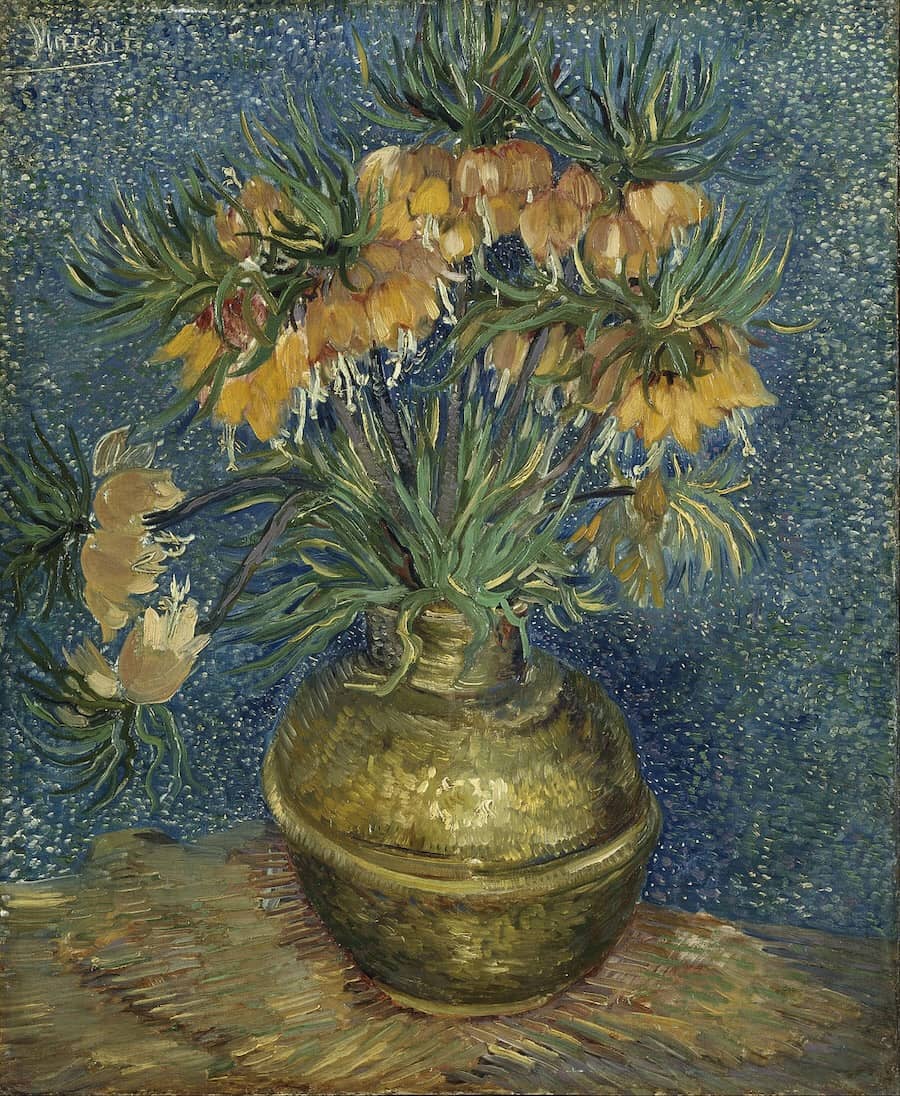Imperial Fritillaries in a Copper Vase, 1887 by Vincent Van Gogh

Still-life pictures and in particular those of flowers were something that Van Gogh addressed throughout his career, often, it must be said, due to the lack of willing models or inspiring scenes. However, he is known to have had an abiding love of nature and flowers, which partly explains his frequent depiction of them, By the time of painting this picture Van Gogh's strong use of colour was becoming very evident. He has absorbed the ideas of Georges Seurat and Signac, and though his temperament was unsuited to their varying precise style and articulation of scientific theories, he was much taken with the concept behind the theories, i.e, that of complementary colours, Here the dynamic yellow of the flowers set against the vibrant blue background is a case in point, He had also become increasingly interested in pattern and the effect of pattern, and in direct relation to this with Japanese art.
There is a distinctly Oriental feel to this work, which although keeping its roots grounded in naturalism has gone beyond this form to become a highly aesthetic and patterned image,




















